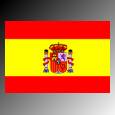
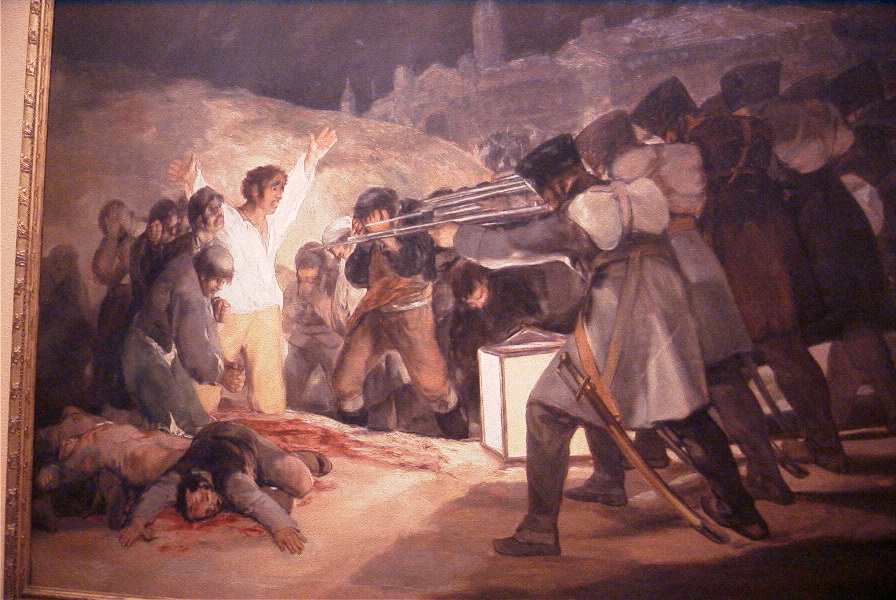
After dropping off my gear at the hotel, it was off to the Prado Museum.
The Prado was designed in 1785 as a natural-science museum but by the time it opened in 1819, it was assigned to display the Spanish Habsburg and Bourbon royalty's vast collections of art (including that of the low countries and Italy who were ruled by these folks for a time). An 1836 law forced Catholic institutions such as monasteries and churches to turn over their art treasures to the general public. The results are a remarkable collection, perhaps the best Classical collection in the world.
There are a few Greco-Roman pieces like this 230 BC sarcarphogus showing Agamemnon between Ulysses and Paris:
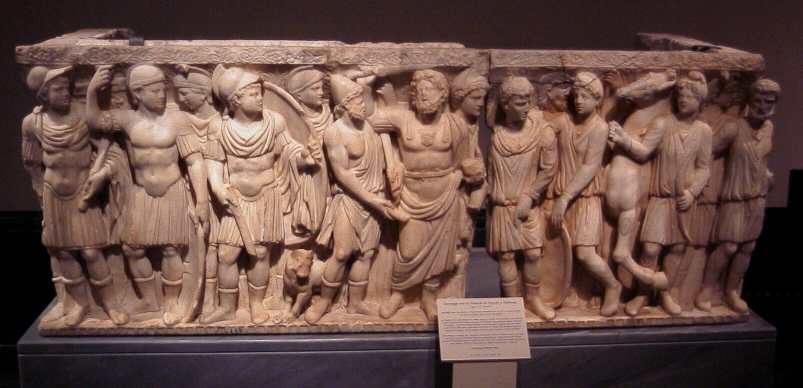
While the Louvre has its three ladies (all created outside of France) spanning about two milleniums, the Prado has many works from the three greatest Spanish artists spanning about two centuries: El Greco, Diego Velazquez, Francisco Goya.
El Greco has two galleries in the Prado but we will see more of him on the last day of our trip when we venture to Toledo where his paintings still dominate the city.
The Prado houses five galleries with some of the most famous paintings of the Sevillian Velazquez (1599-1660), a painter virtually unknown until the Prado displayed his paintings. (We can't blame a fickle public; Velazquez's works had been pretty well confined to palaces inaccessible to all but royalty.) On a 1865 trip to Spain, Manet "discovered" Velazquez as the Baroque/modern master he is generally regarded to be today.
The Prado houses fifty Velazquez paintings -- a lot when you consider that Velazquez was not particularly prodigious since the king had him busy doing a lot of things besides painting. The royalty owned most of Velazquez' work as he was on the king's payroll for 75% of his adult life.
Velazquez's "The Maids of Honor" or "Las Meninas," painted of the family of Philip IV just as his empire was about to crumble is considered one of the most important paintings of the 17th century.
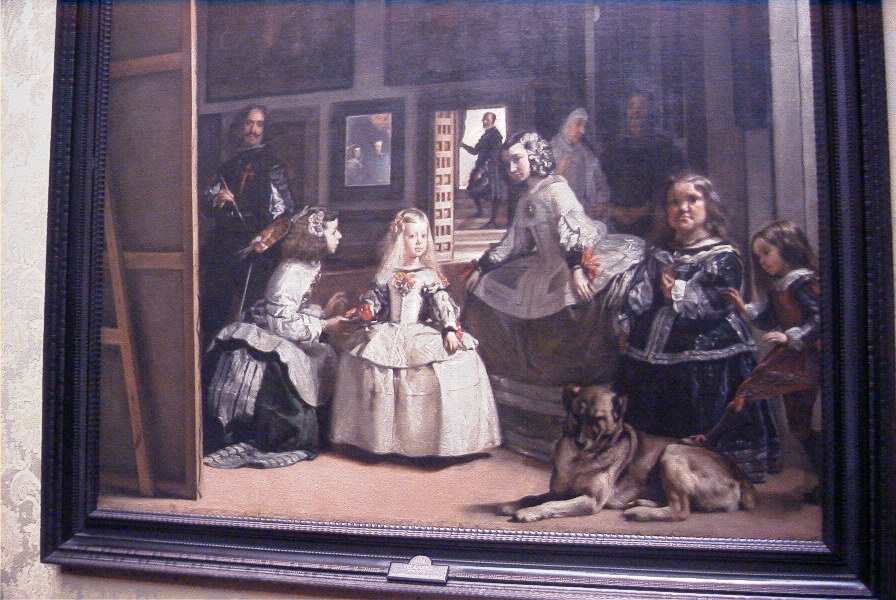
You can probably find the maids of honor (the Meninas), the children, the dog, the dwarves, and, of course, the artist himself in his studio, but where are the king and queen? Hint: Check out the headline above! Like us, they are viewing the scene.
Given that the Prado has 150 Goya paintings and over 500 drawings of this great Velazquez admirer, it is no surprise that the work of the rococo-trained Goya occupies several of the Prado's galleries.
Goya's first major works (displayed chronologically, of course, at the Prado) were sets of drawings to be used by tapestry makers decorating the king's walls. He progressed to portraits and popularity but a mid-40s deafness and exposure to the invading French changed his visual imagination to that focus of light and theme which later inspired the impressionists.
The end of the 18th century witnessed a crackdown on nudity in art so much so that two successive Spanish kings seriously considered destroying the many now-priceless nudes in their collections. But then prime minister Godoy commissioned Goya to paint the same woman (probably Godoy's mistress) both clothed and naked for display in his study -- Sort of an early version of the paper clip-on dresses. The painting was finally displayed in the Prado around 1900 -- a century after it was painted. Next to it is the more subtle -- but just as provocative -- clothed version, perhaps painted to hide the nude:
"The Naked Maja" and "The Clothed Maja" (c. 1800–05).
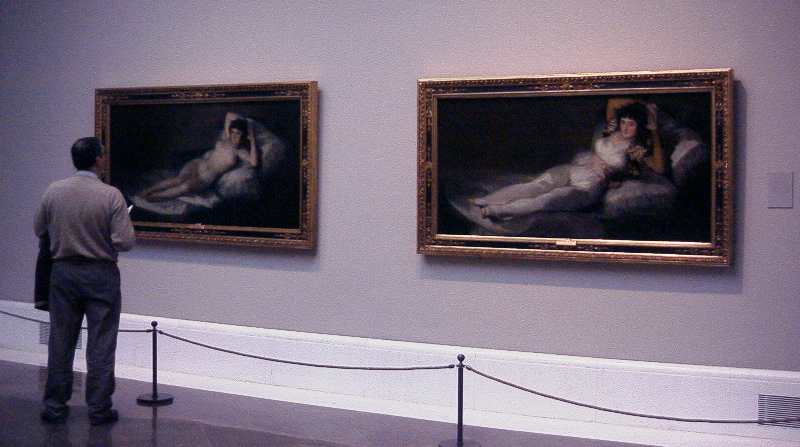
The gentleman in this picture is probably not Prime Minister Godoy.
A favorite Goya is a quasi-propagandist work at the top of this page which turned out to be a masterpiece. In the " The 3rd of May 1808 in Madrid: The Executions on Príncipe Pío Hill," Goya was supposed to glorify the Spanish patriots who rebelled against the 1808 invasion which left Napoleon's brother Joseph on the Spanish throne. Goya created a permanent anti-war work and one which strongly influenced later French artists (although French soldiers were probably not impressed). (Goya later went on to create about 80 etchings called the Disasters of War which were published posthumously.)
"The 3rd of May" is quite large (8 1/2 by 11 -- not inches but feet!). I hope you have a seventeen foot monitor or larger to view it.
If you want to see a better reproduction than my jet-lagged photo at top (and also a pretty good explanation) click here.
Goya went into exile and died in Bordeaux at 82.
If you want to see more of his paintings, click here.
While Spain is one of the poorer countries in the European Union, it takes good care of its art (shaming the Italians). The Prado is pleasant, well lit, with its fine collection well organized. My favorite feature of any museum were the Prado's vending machines at the entrance to major galleries which for about 50 cents would allow you to buy small paperback gallery guides (in several languages) describing the artists' pictures. The coverage was about the right length to read right as you walked by the paintings.
The Prado's web site is also well done. Click here to visit it.
Afterward the Prado, I took a soggy walk through Madrid's greatest park and crashed in the hotel, out of light and energy. The next day it was off to a stroll through Sunday morning Madrid and a bullfight. Please join me by clicking here.
Where do you want to go today? Here's a few choices:
